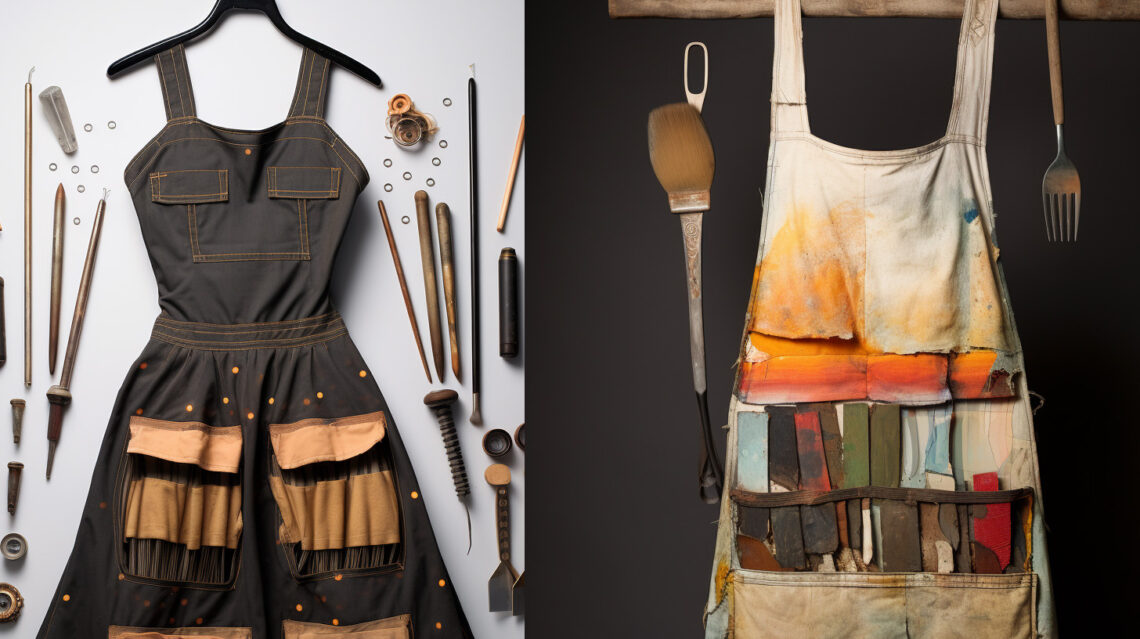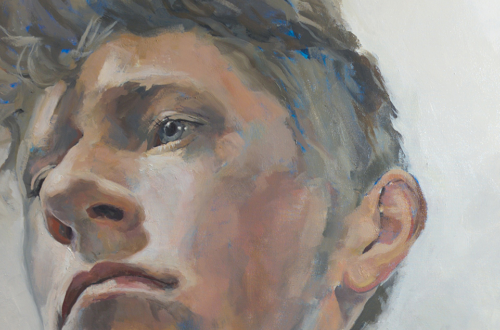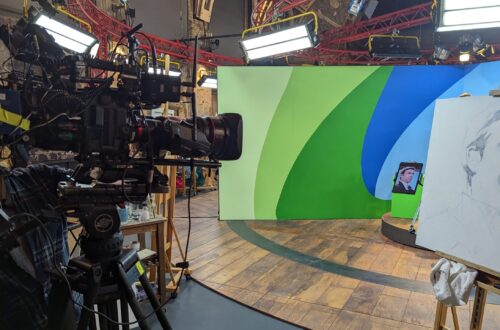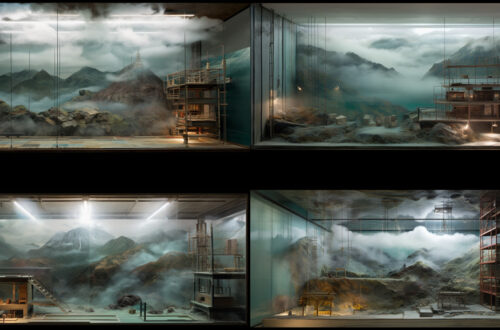
Better Creative Process Will Triumph Over Setting Goals
Do you set yourself creative goals that you never achieve? If you can answer an honest ‘no’ to this question, then you are a very rare commodity. Part of the human condition in modern life is the drive to achieve by setting milestones. This might not be the best way to progress. Let’s consider why you need to stop focusing on goals and focus on refining your creative process.
As would-be artists we can often be focused on goals like finishing x amount of paintings by a certain date or getting your portfolio presentable for the next interview. You might also be aiming to complete a body of work for an exhibition you’ve committed to that’s getting ever closer or trying to get work finished to meet a competition deadline.
The hard truth is…
It’s a hard truth but many of us will compromise on the quality and quantity of the work we produce. We will not enter the competition or drop out of the exhibition opportunity. In former years I’ve done every one of these things but I eventually learned how not to fall into these self-sabotage traps. The answer to all of these problems is a simple shift in emphasis. Adopting process improvement over goals is the key to real progress.
Years ago, I experienced a few missed opportunities and a disappointing period of unsatisfying work. It was then that I decided I was going to stop posting work on social media for a while and have a serious review of what I was doing and how I produced my work.
There was a realisation that I was often churning out work that was substandard to fulfil a need to have something to post. I had become too focussed on the completion of work for the sole purpose of posting on social media. The work had become unintentionally disingenuous. It was clearly time to re-think my approach. To this day I post little on social media, it’s a low priority for me.
Discovering the atomic habit
As artists we often focus too heavily on finishing a piece of work. This is not to be dismissed as an aspiration of course. I have learned that, for me, it is ultimately more productive to focus on how I produce work rather than how much work I produce.
This concept was at the back of my mind for quite some time until I first encountered it as a clearly explained theory in James Clear’s book ‘Atomic Habits’. When I first read about this the logic of it was profound. I realised that I’d been thinking along these lines for years in my own work. I had in fact already put this in to practice, but this book helped crystallise the idea and provide some advocation for my belief.
Read the book, I can’t recommend it highly enough. The basic principle is that small scale positive improvements in your habits and processes add up to moving mountains. Clear emphasises that building successful habits is not about willpower or motivation alone but understanding how these principles work together to create change that endures. He advocates for making good habits attractive, easy to follow, and satisfying to maintain consistency. It’s an approach that works well for creative endeavours.
Creative process is creative progress
When we are working creatively the process can be used to underpin everything that we do. There is an assumption I’ve encountered a lot in people who are not artists or creative practitioners that misunderstands how we work. This assumption is that we are sitting around waiting on inspiration to arrive to allow us to be creative. Then we rush to gather our brushes and paints to start working.
The reality of course is that creative work is very different from this. We often spend a lot of time working on ideas and exploring how best to present those ideas before putting together anything that could be considered a ‘finished’ work.
The journey is the goal. Finished work is almost a by-product of the process. It’s often simply a window on to my exploratory process that allows me to show others what my thoughts are. Like a research paper that makes a digestible version of years’ worth of scientific experimentation and analysis. The paper itself is not the goal.
Equally it is ridiculous to think that you would work away for years in the dark without ever showing your work. The hope is that we can create something that resonates with our audience. Something that others can relate to and that has something meaningful to say. There has to be a balance of course. I’m not saying that you should not produce finished works. This is necessary and ultimately part of the reason for existing as artists.
What we are talking about is a re-alignment of priorities. When you focus on process magic things happen. Work begins to almost create itself as a by-product.
The power of positive habits for artists
In ‘Atomic Habits’, Clear advocates for examining habitual behaviours (good and bad). You then going on to make small adjustments to these habits by breaking down the process of habitual behaviour. This process can be used to encourage and enhance good habits or to break bad habits.
Imagine this example; every time you set out to start painting you are hampered by the fact that your paint palette is dirty from the last painting session. The stains and dried in lumps of paint need cleaned before you start painting. This inconvenience becomes disruptive to your workflow as you have to waste precious time cleaning at the start of every session when you are most energised.
So to tackle this detail you decide to make an adjustment to your process and stop painting five minutes before you usually would in every session and clean the palette in preparation for the next time you sit down to paint. You come to the studio next time round and you are energised and ready to go. No palette cleaning required.
The principles of habit
On the face of it this might seem like a very trivial thing to focus on but that’s part of the concept of Atomic Habits. Every small change adds up to eventually make big change. A few small adjustments like this to your studio process helps to remove the barriers to you being in a productive flow state faster. All the small adjustments add up.
There are four principles emphasised by Clear that help you to do this. He advocates as follows for establishing a good habit:
- Understand the cue for the habit
- Develop a craving for the habit to be performed repeatedly
- Make the response to the craving easy to perform
- Recognise the reward that comes with meeting the habit
If you were trying to break a bad habit you would reverse the emphasis, try to break the craving, make the response more difficult, etc. Let’s look at how examining the details of our process in the context of this framework can help refine the way we work.
Atomic creative process
At the heart of developing better process is being able to understand the relationship between our cues and our habits. Take the time to start observing yourself as you work at every part of your process. This could be at the ideation stage, the preparation stage, while you are actually creating or finishing up. Every stage is a valid target for improvement.
If we take the example of starting your session of work. Examine what time you start working at, how do you prepare to start working? Are there barriers to getting down to work? If so what are they?
When you are going through your creative process think about the strengths and weaknesses of what you are doing. How do you document your raw ideas? What methods do you use to research them? Do you get distracted at any stage? What parts of the process are easier and which are harder? Once you get in to the habit of self-reflection like this it becomes part of your process in itself.
The idea then becomes to pick up on small changes that could make a difference to your process and implement them one at a time. The cumulative effect of these small changes on your ability to work more smoothly becomes disproportionately larger than the effort required to make the changes. This technique works really well and I found it increased my ability to work more fluidly and as a by-product become more productive and effective in the work I was creating.
The importance of self-reflection in the creative process
Self-reflection is not a one-time exercise but should ideally be an ongoing part of your creative journey. By continually assessing your methods, you can identify what works and what doesn’t. This allows you to refine your process over time, making it more efficient and effective.
I’m in the process of writing a more in-depth post about the relationship between creativity and self-awareness. It’s a subject that I feel is profound in it’s implications for our practice. Self-awareness in process, self-awareness in subject and working methods can all have a very positive influence on how we work as artists.
Developing self-awareness is a life long practice that has no end, we change of course and evolve as we grow but an essential ingredient is honesty. It takes us time to be able to brutally honest enough with ourselves to effect real change and that goes as much for the weak practice in our lives as well as our studio practice. More on this another day.
Ultimately the journey is the destination
In the end, the creative process is not just a means to an end but should be a fulfilling journey in itself. By focusing on improving your process, you’re not just preparing yourself for creating better art, but you’re also becoming a better practitioner. So the next time you find yourself setting goals, take a step back and ask yourself the following questions:
- Is my process designed to achieve this in the best way possible?
- What stages of my creative process are rough and clunky and could be improved?
- What small changes could I make to my practical work methods that might make producing my work easier?
- Are there any small changes I could make to my working environment that would allow me to work more fluidly?
- What can I change at the end of a working session that might make it easier to start working again day?
The small changes I’ve made
These are questions worth asking in your creative practice but I also adopt this in small ways in my home life. Before going to bed in the evening I’ll set out or coffee cups ready with the coffee and spoon in place for the morning. It’s a small thing but since I started doing this I’ve never looked back, it’s become part of the daily mechanism and just makes it slightly easier and less hassle to get going in the morning when I stumble out of bed at 5:00am to start writing or working on a project.
In the studio I will now always clean the mixing part of my palette before leaving it for the night, I’ll always make sure I clean my brushes properly before going to bed and lay out the things I need for the next session. The first month or so of changing any habit or establishing a new one is hard but it becomes easier as time goes on of course. It just becomes part of your ritual.
One very small thing that has really helped my productivity was the simple practice of leaving a wee note to myself at the end of every painting session that reminds me what I need to do next. You know I’m sure that we can be so physically and mentally exhausted at the end of a session of creative work (although also somehow exhilarated) that we can forget to take stock before moving on for the day.
My parting suggestion to you is that you stop 15mins earlier to clean up and prepare for the next session and leave yourself that wee note about what needs done next time, or just where to start. Sometimes I even just stick a sticky note to the work with an arrow pointing to ‘here’. This is often enough to get me started.





